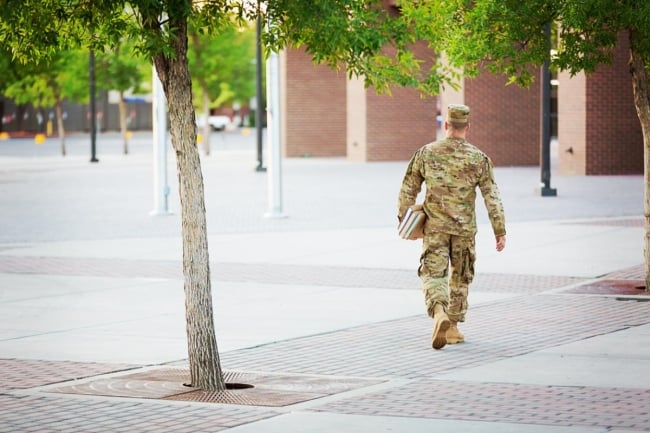You have /5 articles left.
Sign up for a free account or log in.

ISTOCK.COM/MivPiv
A new research article identifies the strengths that students who are military veterans bring with them to higher education.
Katie Sullivan and Kay Yoon, both associate professors of communication at the University of Colorado at Colorado Springs, surveyed and interviewed 115 total student veterans at a large public university in the Southwest for the article, published in The Journal of Continuing Higher Education.
They wanted to explore a more balanced way to view the more than 3.5 million student veterans in the United States that looked at their strengths and not just the challenges facing the population, Sullivan said during a webinar on the study held Wednesday, which was sponsored by the Association for Continuing Higher Education and Endicott College's Van Loan School of Professional Studies.
“How we talk about certain populations makes a real and tangible difference in terms of our policies,” she said.
Previous research has identified the challenges these students may face, including disabilities, post-traumatic stress disorder and higher rates of anxiety and depression.
But a deficit-only framing ignores data that supports student veterans’ success in college, the article states. Student veterans tend to have higher grade point averages and better retention rates than the national average, research shows.
The survey found that three areas of strength for student veterans positively affect their academic experiences, according to Yoon.
Key strengths include:
- Diversity: Student veterans said they have a broad worldview that gives them the ability to communicate with many different types of people.
- Leadership: Student veterans feel they have an ability to mentor others, as well as delegate or facilitate work.
- Drive: Student veterans noted they demonstrate discipline, focus and a strong work ethic.
“It was a really encouraging result to learn that this perception of strength actually made a difference in their performance,” Yoon said.
The students emphasized communication as a key strength, according to the article. They reported feeling they could “read” a situation and determine the best way to communicate in it. For example, student veterans said they might initially want to talk in a “bottom-line up-front” style with professors due to the power dynamics, but they can adjust to talk informally when a professor is trying to make a connection.
The researchers are advocating for colleges to use strengths-based support, rather than solely focusing on the challenges student veterans face, she said.
U.S. representative Seth Moulton of Massachusetts, who served in the Marine Corps, joined the webinar to discuss the issue.
“This study shows that student veterans bring enormous strengths,” Moulton said. “They are often misperceived by people in college education.”
Institutions should focus on helping veterans take the initial steps needed to pursue higher education, he said. The transition period is the most important, but the payoff will be worth it, as those students will contribute to the college community, he said.
“Veterans are disproportionately the CEOs of Fortune 500 companies,” he said. “But they are also disproportionately homeless. We need to help them in the transition.”
At the classroom level, faculty can encourage student veterans to share their experiences and take on leadership roles, such as leading student teams or a classroom discussion, Yoon said. Some student veterans told the researchers that they desire to be used as an expert or additional instructor to help faculty members.
Another idea from the report is to create an introductory class that all student veterans would take, Sullivan said. The class would help those students learn how to use their strengths in the new environment of academe.
Faculty motivation can be an issue, though. One participant in the webinar asked about how to get faculty interested in learning more about these students.
Mandatory trainings do not always work well to change people’s minds, Sullivan said. Grassroots efforts, like email campaigns about student veteran strengths, and distributed material that helps faculty learn how to talk with student veterans about their military experiences, could drum up interest, she said.
Some faculty thought silence was the best approach with student veterans, as they didn’t want to ask too many questions or offend them, Sullivan said. But the students she interviewed didn’t feel that way.
Another challenge is improving faculty and administrators’ understandings of what experience veterans gain from their military careers.
“We need to better educate ourselves in terms of what military service looks like and what it entails,” Yoon said.
Advisers could also help student veterans determine how to better translate their experiences from the language they use in the military to the language they need to use in the civilian world, she said.
“Student veterans get a lot of leadership experience in the military, but can you talk about it in a way that translates to skills that can apply to a management context?” she said.




